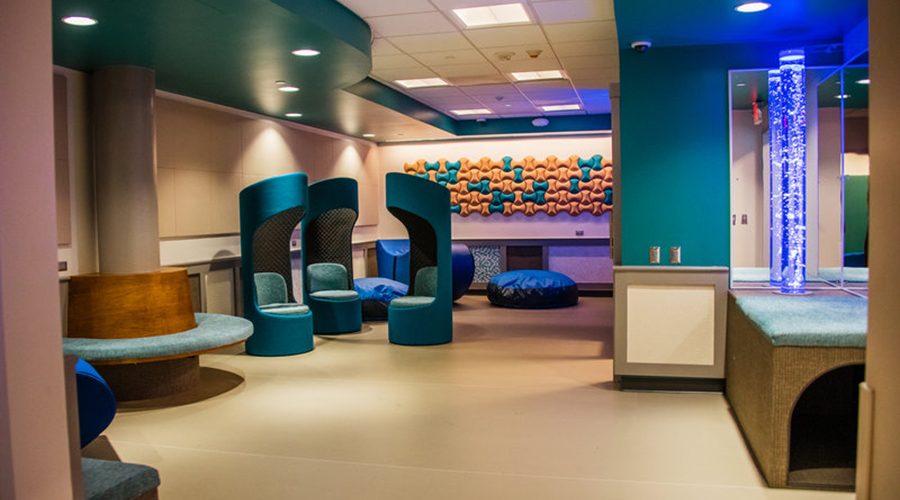Airport Sensory Suite Accommodates Special Needs

The airport is not what you'd consider a calm environment. It's noisy, bustling with people, bright lights and the smell of fast food. The security checkpoints, jetways and airplanes add to an already hectic atmosphere.
All of these factors make for a sensory experience that could be viewed as exciting to some and unnerving to others. Navigating airport terminals can be especially challenging for travelers and guests with autism and other sensory conditions.
To help make travel a little easier, the Pittsburgh International Airport recently unveiled one of the first sensory-friendly spaces in an American airport. The 1,500 square-foot suite welcomes travelers of all ages with a calming transition foyer, a communal family room, individual rooms with bubble tubes, sensory-friendly furniture and an area catering to adults.
“The focus of the space is serving people with all types of neurological struggles or anxieties,” said Jennifer Beck, the project architect with Hayes Design Group Architects in Pittsburgh. “It was careful design work based around how to calm all the senses.”
The room was developed after airport employee Jason Rudge suggested it would help families with autistic children travel. His autistic son, Presley, had a positive experience with a sensory room as part of a preschool program.
“A caregiver for a kid with autism might think, ‘I’m never going to be able to fly anywhere with my family — it’s too hard to travel with someone with autism,’” said Rudge, who works at the airport as a heavy equipment operator. “Having a sensory room at the airport changes that thinking to, ‘Maybe we can take that trip after all.’”
It’s an idea that struck a chord with airport administration and the community. Airport officials and HDG worked closely with parents and organizations specializing in sensory issues. They examined other facilities – schools and hospitals - with sensory rooms to provide a meaningful space.
“We want to make flying accessible to everyone,” said Christina Cassotis, Pittsburgh International Airport’s CEO. “This has been a multi-year process with engagement from more than 40 organizations and lots of parents."
The project initially focused on providing a space for children, but designers quickly realized the room could help people of all ages. That’s reflected in the inclusion of KI's Connection Zone Privacy Booths.
“For an adult, it offers a place to be a little more cocooned and have a little privacy,” Beck said. “If I can sit in this chair and put my headphones on, I can sort of be alone even though I’m in this big airport.”
HDG worked closely with KI partner Corbett Inc. to select solutions comforting to people who need a break from the chaos of concourses. The unique design and orbital motion of Sway Lounge Chairs offer a rocking motion that can be soothing and therapeutic. Also in the room, Katera Guest Chairs and Barron Tables set the stage for a subdued work and gathering area in the quiet room.
“Users told us, ‘This is great. You can come in here with your laptop and get your work done,” Beck said. “It was gratifying hearing people confirm our intentions in the selection of the furniture.”
Extra attention was paid to fabrics, finishes and architectural elements – even using odor-free materials to support people overwhelmed by smells. Cloud covers soften the room’s overhead LED lighting while textured walls - designed for people with autism - help mute sound and offer a tactile experience. Soundproof doors, walls and ceilings block the cacophony of air travel and offer a quiet oasis. A height-adjustable sink and adult changing table support special needs in the restroom.
The sensory suite also helps travelers prepare for the air by including an example of a real jetway and an airplane cabin and seating – complete with overhead bins and working lights above the seats that can be taken for a dry run prior to departure.
Named Presley’s Place in honor of Rudge’s son, the room has garnered national media attention since it opened.
“The Today Show, People Magazine. I lost track after the first week,” Jennifer Beck said. “Not having a strong personal connection to autism, I don’t think I previously understood the diversity of needs that are met by this kind of space. I’m moved by the potential of improving the everyday lives of people, not just in airports, but in many public areas that need spaces like this.”
Subscribe
Stay up to date with the latest trends and more.
